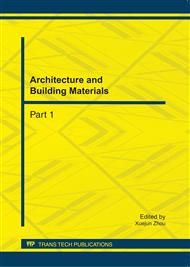p.832
p.838
p.842
p.848
p.852
p.857
p.862
p.866
p.870
Electronic Market Credit Risk Evaluation for Agricultural Products Based on Analytic Hierarchy Process
Abstract:
In the study, electronic market credit risk evaluation for agricultural products based on analytic hierarchy process is proposed.Firstly, the evaluation indexes are analyzed and the hierarchic tree is formulated based on the evaluation indexes.Then, pairwise comparison matrix is established,and the consistency of discriminant matrix is judged.When the consistency of discriminant matrix is satisfied,the weight vector of the indexes which are used to establish the pairwise comparison matrix are obtained. And weight of each index is obtained.Finally,final decision making is obtained. The experimental results show that the evaluation of electronic market credit risk evaluation for agricultural products based on analytic hierarchy process is effective.
Info:
Periodical:
Pages:
852-856
Citation:
Online since:
September 2011
Authors:
Price:
Сopyright:
© 2011 Trans Tech Publications Ltd. All Rights Reserved
Share:
Citation:


